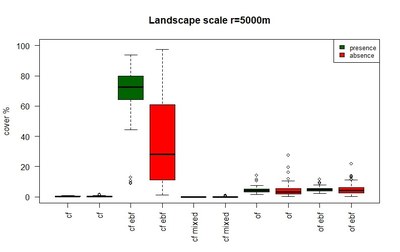Assessing the effects of landscape variables at different scales on Great Green Macaw nest occupancy in north Costa Rica
Selina Scholz
Gaining knowledge on how species respond to habitat loss and change at various spatial scales is crucial for setting conservation priorities. Often studies only focus on a relatively small scale. For the Great Green Macaw (Ara ambiguus) only limited information is available. The Great Green Macaw is dependent on large tropical trees, especially the mountain almond tree (Dipteryx panamensis), for nesting and feeding at a plot scale level, and it is also able to travel large distances for foraging. As such, the aims of this thesis were to evaluate and characterize its habitat at both plot and landscape scale. Plot scale level was characterized by field mapping, whereas landscape scale was defined by using Copernicus global land cover data. Trees at the plot scale are often found in open pastures or agricultural areas in fragmented forest. No correlation was found between the number of large trees within a radius of 50 m and nest occupancy. Amount of forest cover increases with the radial distance from the nest location. This thesis yields that the habitat variable forest cover is most important at a landscape level for predicting Ara ambiguus nest occupancy. It was seen that at a radius of 1000 m, there was a minimum forest cover of 77.95 %, and 78.88 % at a radius of 5000 m respectively. Forest cover appears to correlate with nest occupancy but not with nest productivity, as Ara ambiguus move between nest sites in their current breeding territory. Based on the results in this study it can be concluded that a high proportion of forest cover combined with a high density of Dipteryx panamensis positively affects Ara ambiguus nest occupancy. This study aims to obtain basic biogeographical knowledge in order to set conservation priorities. It is recommended that long-term goals should be to develop biological corridors in a way that species can easily migrate across individual fragments of pastures or agricultural cultivated land.

|
Fig. 7. Plot scale 50 m. Descriptive representation of land cover classes in % of 48 nest presences |

Fig. 9 a. Forest classes of landscape scale 5000 m. Descriptive representation of land cover classes
in % of 95 nest presences and 95 nest absences. (cf = closed forest, cf ebl = closed forest evergreen
broad leaf, cf mixed = closed forest mixed, of = open forest, of ebl = open forest evergreen broad leaf)
